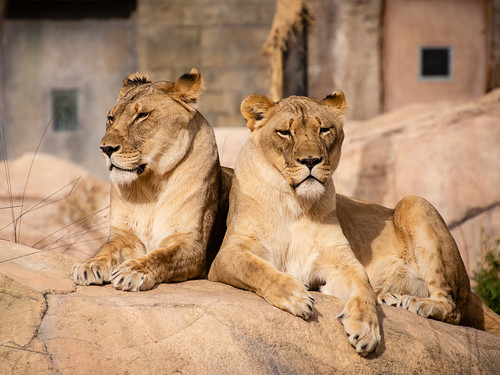Zoos tend to generate opposing points of view. Some people wholeheartedly endorse them as a means of promoting interaction between humans and other animals, educating the public about wild animals, and assisting with species conservation. Other people oppose keeping animals in captivity indefinitely in order to entertain humans.
The City of Saskatoon has developed a Master Plan outlining their ideas for the future of the Saskatoon Forestry Farm Park and Zoo. The Plan pays a lot of attention to services (i.e. parking) and a shared vision (botanical, zoological, heritage, and recreation), but there is little information about how they intend to develop a world-class zoo in the 21st century.
Zoos are very popular and they generate a lot of money so they are unlikely to cease to exist any time soon. But there are ways in which zoos could be improved to promote animal welfare, environmental education, and human/animal interaction.
Animal Welfare
“Zoos that support efforts to improve sub-standard zoos, zoos that take on non-breeding or old animals (often because no one else will), zoos that join forces with animal welfare groups to rescue animals, zoos that refuse to hold certain species and zoos that speak out against unethical and immoral welfare practices – these compassionate zoos should be the future.”
Zoos need to focus on individual animal welfare. Don’t break up friends and families by moving them from zoo to zoo. Don’t treat wildlife as breeding machines, expected to breed on demand. Stop unnecessary killing of animals simply because they are surplus to requirements.
Some animals do not do well in captivity (the most intelligent animals or large ones that need space to roam) and don’t belong in a zoo.
By working hand in hand with wildlife rehabilitation organizations, zoos can serve as a refuge for rehabilitated wildlife. Whether it’s an eagle that can no longer fly or an orphaned bear cub that cannot be returned to the wild, these animals can be a wonderful introduction to the amazing diversity of local wildlife.
More and more, zoo visitors can observe wildlife in large, naturalistic enclosures. But, “as night falls and the facilities need to be cleaned, the animals are commonly led into small concrete holding areas.” This can lead to negative changes in behaviour and should be stopped.
Pro-Environmental Behaviour
“The world-class zoo or aquarium of the 21st century will not consider itself to have an effective education programme simply because it displays graphics for visitors. . . . In order to be outstanding, conservation education programmes must inspire people to change their attitudes and behaviour to benefit wildlife and their habitats.”
Zoos tend to house charismatic animals with big eyes, cuddly fur, and high profiles. Less attractive animals are under-represented. Instead, zoos could shift to smaller animals, such as reptiles and amphibians. “Exotic insects like the Madagascar hissing cockroach could teach visitors how dynamic ecologies work and still let young people encounter animal life up close. An emphasis on endangered amphibians like the Panamanian golden frog would allow for a wide-ranging set of exhibits on the vulnerability of delicate ecosystems around the world.”
Graphic displays should move beyond informing visitors of biological facts or the loss of biodiversity to actively promoting pro-environmental behaviour. This could include linking problems with human actions and providing comparisons between human and non-human behaviour.
Zoos could skip the Noah’s Ark approach by housing a larger population of a smaller number of species from a specific geographical area. Grouping animals from a specific environment to show how they interact would emphasize the importance of conserving habitats rather than individual species.
 |
| Turtle Sanctuary, Ajaccio, Corsica |
Enhanced Human/Animal Interaction
“Zoos should move forward in developing a social movement for conservation. They can effectively drive social innovation in the relationship between humans and animals by bringing new voices to conservation and connecting humans to the ultimate responsibility we have to care for our planet.”
Zoos are often the only place where urban children encounter living animals. As such, it’s important to demonstrate healthy animal behaviours and avoid the mixed messages conveyed by petting zoos and horse-drawn carriages.
Visitor behaviour can have an effect on the wildlife. “Noisy visitors and larger groups will have a larger impact than solitary quiet visitors. Visitors that offer food, eat and smoke around enclosures will also have a negative impact on animal behaviour.” Visual barriers and sound-absorbing materials are two of the ways that enclosures can be designed to protect the animals.
Further Information:
Can a More Compassionate Zoo Improve Animal Welfare
Characteristics of a World-Class Zoo or Aquarium in the 21st Century
Different Views on How to Make Zoos More Resident-Friendly
Expert Offers Suggestions on Improving Zoos and Aquariums
Fostering a New Relationship Between Humans and Nature
How to Make Zoos Happier Places
How to Save Zoos? Focus on Education, Conservation
Zoos Aren’t Victorian-era Throwbacks: They’re Important in Saving Species



